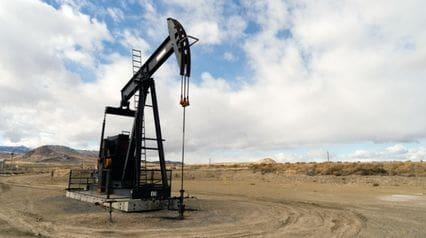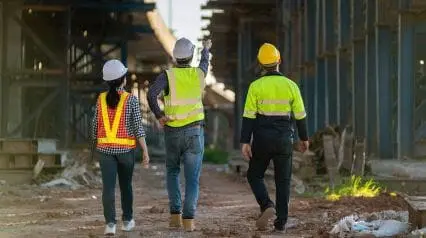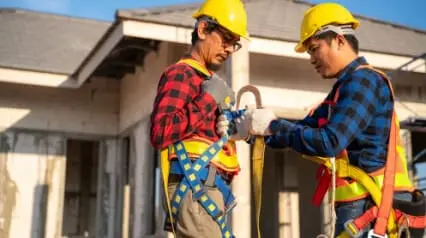What is Fracking?
Fracking, the more common term for hydraulic fracturing, is a method or technique used in the unconventional process of Oil and Gas (UOG) extraction. This technique injects a mixture of water, sand, and chemicals at high pressure into shale rock formations deep underground to fracture the rock and release trapped natural oil and gas, which are then brought to the surface.
History
Fracking has been used in the United States since the 1940s but has become more widespread in recent years due to advancements in technology and the increased demand for energy. Fracking has become a major source of energy in the US, accounting for more than half of the natural gas produced in the country.
When did fracking start? Who invented fracking?
The fracking history dates back to 1865, credited to a Civil War Union veteran Lt. Col. Edward A. L. Roberts when he received his first patent for an “exploding torpedo.” The “exploding torpedo” could be lowered down into an oil well and then detonated to shatter the surrounding rock. After this, water is then pumped into the well to increase oil flow.
Benefits
Energy Independence
One of the primary advantages of fracking is increased energy independence. By tapping into shale rock formations, the US has been able to reduce its dependence on foreign oil and natural gas. This has allowed the country to become more self-sufficient and less reliant on other countries for its energy needs.
Job Creation
Another benefit of fracking is job creation. The process of fracking requires a large number of workers, from engineers to drillers to truck drivers. This has created thousands of jobs, helping to boost the economy and providing employment opportunities for many people.
It has been estimated that the industry has created over 2 million jobs in the US alone. This has had a positive effect on the economy, as it has provided employment opportunities for many people. Additionally, fracking has also been credited with reducing the cost of energy for consumers. This has allowed businesses to save money on energy costs, which has, in turn, allowed them to invest more in other areas of their operations.
Economic Impact
The increased production of oil and natural gas has led to lower energy prices, which has helped stimulate economic growth.
Additionally, the increased production of oil and gas has also resulted in increased tax revenue for local and state governments. This is due to the fact that fracking operations often require large amounts of land, which can be taxed by local and state governments.
Finally, fracking has also had a positive impact on the stock market. Companies involved in the fracking industry have seen their stock prices rise significantly, as investors have become more confident in the industry’s future prospects. This has allowed companies to raise capital and expand their operations, which has had a positive effect on the overall economy.
Risks and How to Mitigate Them
It’s also worth noting the various disadvantages of fracking. Despite the potential economic benefits, fracking has been linked to a number of environmental risks as well as a number of health risks. Here are some of them:
Seismic Activity and Land Disruption
The process of fracking involves injecting large amounts of water and chemicals into the ground, which can cause small earthquakes. These earthquakes can cause damage to nearby structures and can also lead to the release of hazardous materials from underground.
Since the process of fracking requires large amounts of land, this can lead to the destruction of natural habitats. Additionally, the chemicals used in the process can contaminate the soil and water, making it difficult for plants and animals to survive in the area.
Pollution
One of the risks when fracking for natural gas is its ability to pollute air and water, which can endanger humans, wildlife, and the environment. Since the method of fracking can release hazardous chemicals, it can cause cancer, skin diseases, asthma, and other respiratory illnesses in humans. On the other hand, wildlife safety is threatened when streams, rivers, and other bodies of water are contaminated by fracking fluid.
Damage to Water Resources
One of the most significant risks is the potential for contamination of groundwater. Fracking involves the injection of large amounts of water, sand, and chemicals like methane into the ground. And if these chemicals are not properly contained, they can seep into nearby groundwater supplies.
Digitize the way you Work
Empower your team with SafetyCulture to perform checks, train staff, report issues, and automate tasks with our digital platform.
Get Started for FreeSome of the common steps that fracking companies can take in mitigating these risks are:
- conducting Job Hazard Analyses (JHAs) and risk assessments before starting operations; and
- assigning dedicated personnel to resolve issues and implementing corrective and preventive actions identified during site inspections.
Fracking companies’ safety officers can also opt to take training courses and certification programs to advance their knowledge and expertise in fracking safety. Resources like training courses from Occupational Safety and Health Administration (OSHA) are good options.
How Does Fracking Work?
The fracking process involves the following steps:
- Once the fracking site is inspected and confirmed for operation, a hole is drilled into the shale rock.
- After, the fracking fluid (a combination of water, sand, chemicals, and other materials) is injected into the well using high pressure.
- The fracking fluid then causes the shale rock to crack. This creates fissures that serve as passageways for the trapped gas to escape.
- The trapped gas is then released and flows out.
How This Technique is Regulated and Viewed Worldwide
In different parts of the world, the practice of fracking is regulated, seen, and managed uniquely. For an overview, here’s how these countries and unions are:
US
The regulations and laws surrounding fracking vary from state to state in the US. In some states, fracking is heavily regulated and monitored, while in other states, it’s not. In states where fracking is heavily regulated, companies must obtain permits from the state before they can begin fracking operations. These permits are typically granted after a thorough review of the proposed site and the potential environmental impacts of fracking.
In addition to state regulations, the federal government has also implemented regulations on fracking. The Environmental Protection Agency (EPA) has issued regulations on air and water quality, as well as waste disposal. The EPA also requires companies to disclose the chemicals used in fracking operations.
The regulations and laws surrounding fracking are constantly evolving as new information is gathered about the risks and impacts of fracking on the environment. As such, it’s important for companies to stay up to date on the latest regulations and laws in order to ensure that they are in compliance. Additionally, it’s crucial for citizens to stay informed about the regulations and laws surrounding fracking in order to ensure that their local environment is being protected.
United Kingdom
In the UK, shale gas activity is still in the exploration stage according to the Health and Safety Executive (HSE). Moreover, the UK recently lifted the pause on shale gas extraction and fracking ban amidst the energy price crisis to help achieve its aim of energy independence by 2040.
Any fracking operations in the UK, being regulated by the Oil and Gas Authority (OGA), can’t push through without going through rigorous health and safety, environmental, and planning permission protocols.
Australia
In Australia, all oil and gas exploration and extraction activities are regulated at the State or Territory level. On the other hand, offshore petroleum activities in Commonwealth waters are regulated at the Commonwealth/Federal level.
European Union (EU)
EU policies revolving around fracking encourage its member states, including Finland, France, Germany, Italy, and Spain, among others, to comply with the minimum principles and practices as they apply their relevant legislation related to the hydraulic fracturing process.
FAQs About Fracking
Fracking is a process used by oil and gas companies to extract resources from the ground. In the US, fracking is used to access oil and gas reserves in shale formations. In other countries, it is used to access resources in coal beds and tight sands.
Fracking is also used by geothermal energy companies to access resources for energy production. Geothermal energy providers use this process to access hot water and steam that can be used to generate electricity.
One type of fracking is hydraulic fracturing, which is the most common type of fracking. This type of fracking involves pumping a mixture of water, sand, and chemicals into the ground at high pressure in order to create fractures in the rock formation. This allows the natural gas or oil to be released and collected.
Another type of fracking is acid fracturing, which is used to dissolve the rock formation and release natural gas or oil. This type of fracking involves pumping an acid solution into the ground at high pressure in order to dissolve the rock formation and release the natural gas or oil. This type of fracking is often used in areas where the rock formation is too hard for hydraulic fracturing to be effective.
The chemical combinations that fracking companies use in their processes are, in general, proprietary. Hence, these are highly confidential (trade secrets), making it difficult for governing bodies and regulatory agencies to fully understand all the chemicals used in fracking operations.
Considering its potential environmental impacts, fracking can threaten, contaminate, and destroy natural resources such as groundwater if proper safety measures aren’t enforced and the overall processes don’t follow minimum protocols. This is why it’s important to ensure fracking safety and mitigate the risks associated with it.




